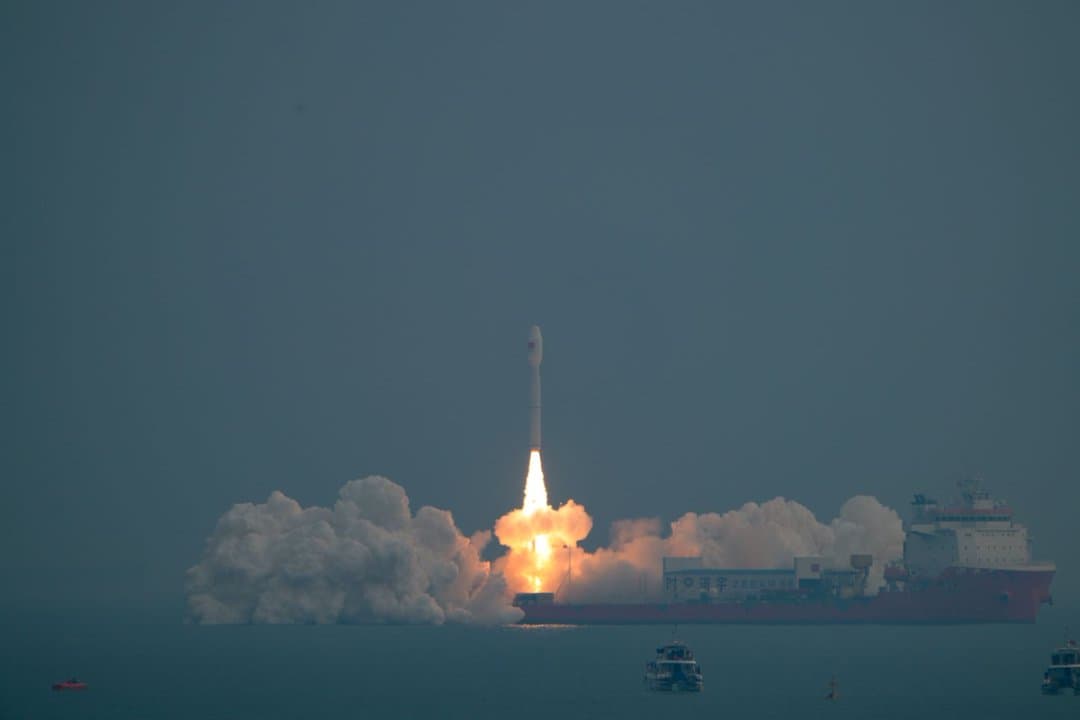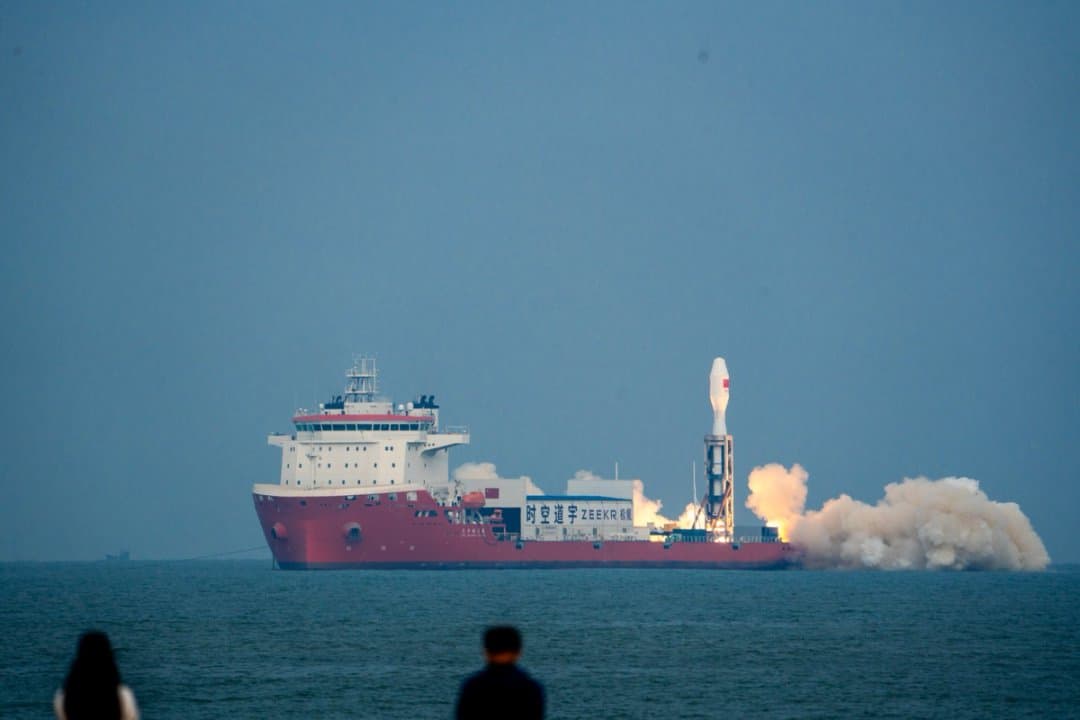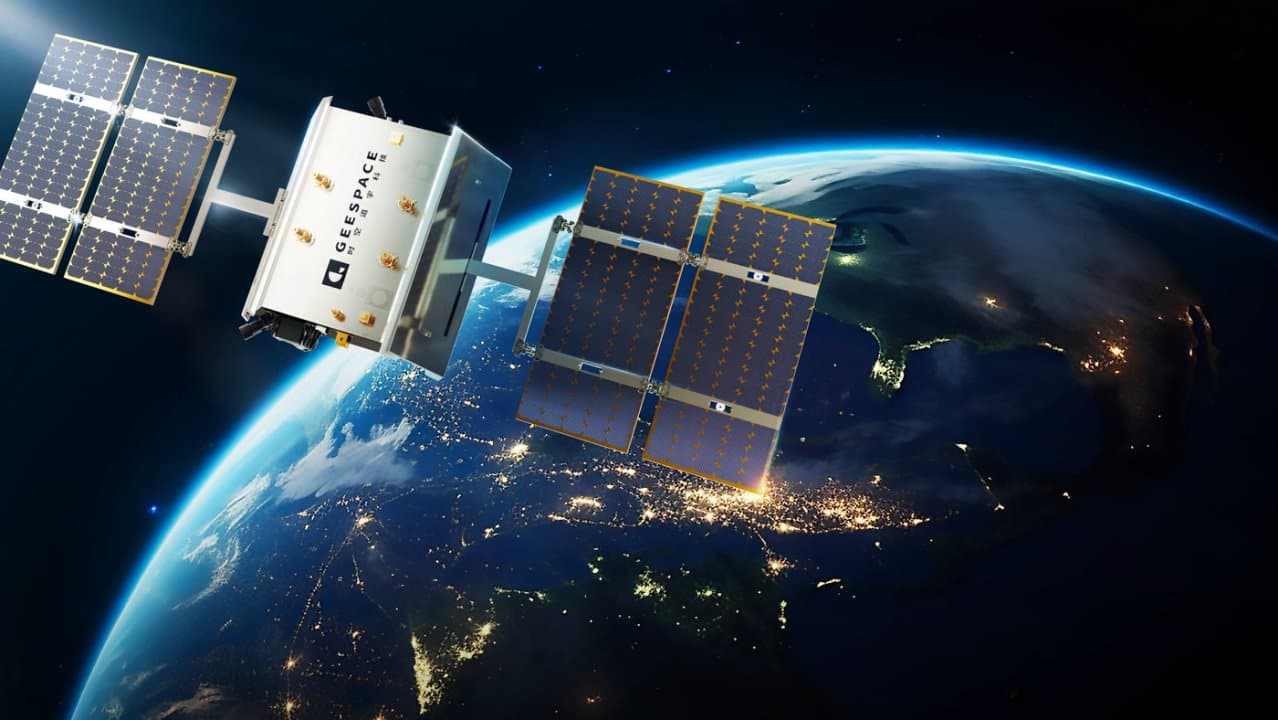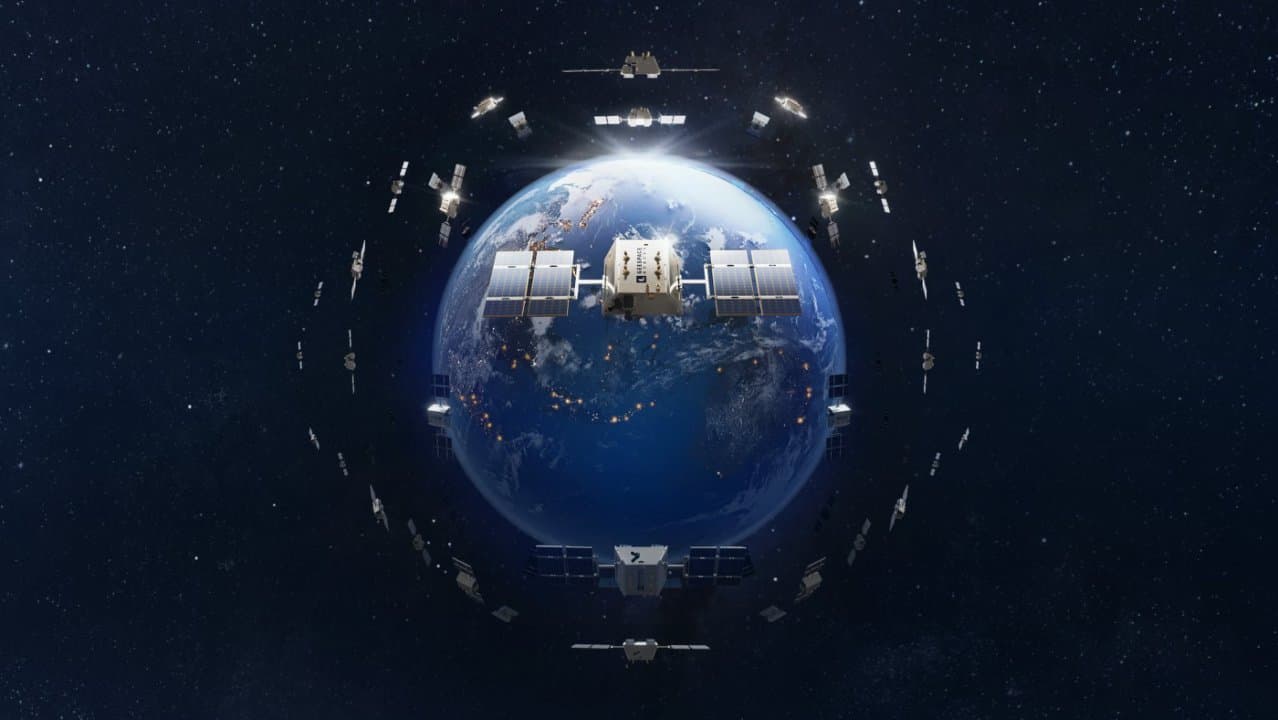In 2025, China's satellite communication industry has pressed the "accelerator button".

China is entering a period of intensive satellite launches. According to incomplete statistics, China will launch a total of 13 satellites from August to September 2025. One of the most impressive domestic constellations is the Geely constellation, which has achieved three consecutive network launches in the past two months.
On September 24th, in the waters of Rizhao, Shandong, the sixth orbit satellite of the Geely constellation was successfully launched in a "one rocket, 12 satellites" manner, marking the successful completion of the first phase of the Geely constellation network. The private commercial aerospace enterprise in China, Time Space, created this domestically produced constellation. The constellation design and development took 3 years, and the satellite launch and deployment took 4 years. Once completed, it opened the curtain of large-scale commercialization and entered a new era of global satellite IoT commercialization.

Recently, the Ministry of Industry and Information Technology issued the "Guiding Opinions on Optimizing Business Access and Promoting the Development of Satellite Communication Industry", which clearly states the orderly promotion of satellite communication business access. Its core significance is to promote the upgrading of satellite communication from "supplementary technology" to "strategic infrastructure", and to activate the potential of the entire industrial chain through policy innovation. In addition, the satellite Internet license will be issued soon, which provides institutional guarantee for private enterprises and operators to quickly enter the satellite communication market. At the same time, policy guidance will transform technological advantages into industrial advantages, such as supporting the exploration of new satellite communication services and organizing commercial trials of satellite IoT. Support eligible enterprises to rely on low orbit satellite IoT constellations to provide wide area IoT connectivity services for areas that cannot be covered by ground networks such as the sky, ocean, and remote areas.
From the perspective of global aerospace industry trends, low orbit satellites have become a strategic battleground. SpaceX's Starlink program in the United States has deployed over 8000 satellites. The European Iridium system has undergone iterations and is extending from traditional communication fields to satellite IoT scenarios.
China's private satellite power is rising.
Among the global commercial satellite IoT constellations, the Geely constellation ranks second in terms of the number of satellites in orbit, comparable to the second-generation Iridium satellite. The first phase of the Geely Constellation network has been completed, making Space Time Space one of the few companies in the world that can provide real-time satellite IoT communication coverage after Iridium II. The user base is expected to surpass Iridium. In addition to establishing constellations, the Space Time Universe also covers the full chain capability from satellite communication chips, modules to various types of terminals, with clear positioning and comprehensive services, possessing the strength comparable to international mainstream commercial aerospace enterprises.

64 spacetime satellites in orbit
Can provide services to 20 million users worldwide
As of now, including the experimental satellites deployed at the pre orbital level, the number of spacetime satellites in orbit has reached 64, weaving a global satellite Internet of Things. All satellites have a 100% reliability in orbit and a network reliability of nearly 100%. Real time communication coverage has been achieved at any location on the Earth's surface, except for the North and South Poles.
Setting aside the number of satellites, continuous coverage and strong anti-interference ability are the prerequisites for low orbit satellites to provide stable communication capabilities.
With existing in orbit satellites, the Geely constellation can achieve real-time coverage of 1 to 2 satellite communications in the area between 60 degrees north and south latitude. The daily communication capacity of the entire system has exceeded 340 million times, providing stable services to 20 million users worldwide, including 5 million high-frequency users and 15 million mid low frequency users. The single communication capacity is 1900 bytes, supporting business transmission types such as text messages, voice messages, and images, meeting the diverse needs of IoT applications.
The constellation payload and terminal are equipped with a fully stack self-developed adaptive anti-interference algorithm, with an anti-interference ability of 50dB. The signal has strong anti-interference ability, fully ensuring communication information security. At the same time, its business frequency has excellent diffraction characteristics and low link loss, which enables the system to maintain excellent communication availability and reliability in complex environments, far exceeding similar international systems.

On the basis of medium and low-speed data communication services, the space-time channel can combine real-time settings, priority allocation, confirmation mechanism, message length settings, service frequency selection and other dimensions of satellite IoT communication according to different application scenarios, supporting the definition of diversified application services based on user needs. For example, in the field of emergency communication, higher communication priorities can be set to ensure timely emergency response. In the scenario of satellite connected vehicles, real-time location confirmation and short message transmission are supported to ensure the interconnectivity of vehicles. When applying satellite IoT communication equipment in industries such as construction machinery, it is suitable for low-frequency and low-power mode settings to meet the industry application scenario requirements of low cost, ultra-low energy consumption, and long endurance services.
In the future, after the full deployment of the 72 satellites planned by Time Space, the entire constellation system will achieve 3 to 4 layers of real-time coverage in the global coverage area, and the communication capacity and service reliability will be further improved. As a new generation of satellite IoT constellation created by China's commercial aerospace industry for global commercial use, it has not only entered the global first tier, but also provided new strategic infrastructure for the digital and intelligent transformation of global industries.
Satellite IoT opens the curtain of commercialization
From "luxury goods" to "daily necessities"
Choosing the satellite Internet of Things, a new type of satellite communication network, is a strategic choice for Time Space.
Compared with the satellite Internet, the "optical network in space", the satellite Internet has several advantages:
Firstly, the construction speed is faster and the cost is controllable. The low orbit satellite IoT constellation does not require high bandwidth, and the network size usually requires global coverage with dozens of satellites, making the investment return cycle more controllable; In contrast, LEO satellite Internet constellations often require the networking scale of thousands of satellites. Taking SpaceX's Starlink as an example, there are currently over 8000 satellites in orbit.
Secondly, the rigidity of industrial demand is stronger. The logistics, energy, agriculture, fisheries, emergency and other industries urgently need low-cost, low-power, wide coverage, and highly reliable communication infrastructure. With the global development of the Internet of Things, the contradiction of insufficient coverage of traditional cellular networks in areas such as oceans, deserts, and mountainous regions is becoming increasingly prominent. The low orbit satellite Internet of Things, with its characteristics of low latency, wide coverage, and flexible networking, has become an important means for various industries to make up for the shortcomings of ground networks.
Furthermore, it is the promotion of policies and ecology. The country is vigorously promoting new infrastructure such as industrial Internet, Internet of Vehicles, and smart agriculture. The satellite Internet of Things is highly compatible with these industries, making it easier to form a closed loop of industrial value and accelerate the implementation of commercialization.
Finally, let's take a look at the tariff cost. The communication service fees of satellite IoT are significantly lower than traditional satellite communication, expected to be only 1% of traditional satellite communication, greatly reducing the threshold for public use. The commercial curtain of satellite IoT is about to open, pushing satellite communication from a "luxury" to a "daily necessity".
Figure 1 Comparison between satellite Internet and satellite Internet of Things
Building a complete business closed loop service worldwide
Multiple large-scale markets have completed commercial validation testing
The reason why China's satellite communication industry is accelerating is that it has entered a "critical turning point" - the commercialization landing after large-scale networking.
Going abroad has become one of the important strategies for Chinese commercial aerospace enterprises.
It is reported that Time Space has cooperated with telecommunications operators from more than 20 overseas countries, including Oman, Malaysia, Saudi Arabia, Morocco, Kenya, Argentina, etc., to promote the global implementation of satellite IoT services.
In China, Time Space Daoyu has completed commercial verification tests with multiple industry partners including China Unicom, Zoomlion Heavy Industry Science and Technology Co., Ltd., Geely Automobile, and Cao Cao Chuxing.
Adequate preparation of products and services should be made before landing. In March 2023, Spatiotemporal Daoyu completed the research and development, as well as chip fabrication, of satellite communication chips based on its own constellation; Subsequently, the development and testing of communication modules and various types of satellite communication terminals were completed one after another.
Behind the acceleration of global business layout is hard power. In June 2024, Geely Constellation completed its first overseas commercial verification test in Oman, Middle East, with a communication success rate of 99.15% and network availability exceeding 99.97%. In commercial verification tests in scenarios such as "satellite+intelligent networking", "satellite+marine fisheries", "satellite+engineering machinery", and "satellite+transportation logistics", the success rate of the tests is close to 100%.
The premise of commercialization is that there are constellations in the sky. The Geely Constellation project was launched in 2019 and after 7 years, the first phase of networking will be completed by 2025. During this period, constellation design and development took about 3 years, and satellite launch and deployment took about 4 years, achieving a rapid closed-loop from project approval to operation.
From 'constellations in the sky' to 'applications on the ground', a complete business cycle is beginning to emerge.
Spatiotemporal Dao Yu has established a complete business loop of "space segment (satellite) - ground system - application products" and achieved full chain self-developed capabilities. From constellation system design verification, payload platform self-developed, satellite mass production, autonomous management of constellation measurement and operation control, application communication chips to multi module terminals, all have achieved independent research and development and mass production, forming a sustainable and replicable commercial closed-loop capability.
On the "second half" track of satellite IoT, only private commercial aerospace enterprises that have completed business closed loop and global expansion can embark on the fast track, pave the way for satellite communication to enter ordinary people's homes, empower various industries, and push satellite communication from "luxury goods" to "daily necessities".
The domestically produced satellite IoT constellation has entered the world's top tier, opening up a new path for satellite communication. Only with global operational capabilities can we set sail and represent China's space power in the race on the space stage.










